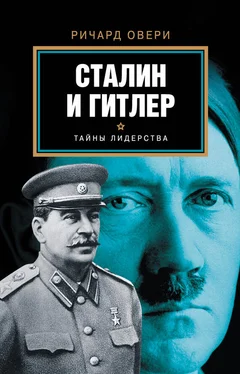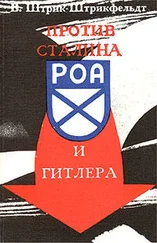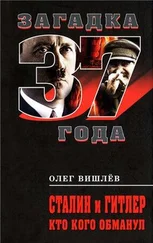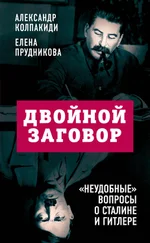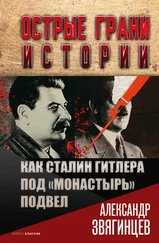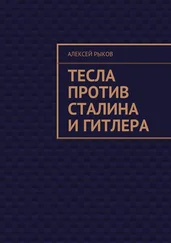56. See Pavlova, ‘Strengths and Weaknesses’, pp. 23–37; S. Pons ‘Stalinism and Party Organisation (1933–48)’, inj. Channon (ed.) Politics, Society and Stalinism in the USSR (London, 1998), pp. 93–4.
57. G. A. Bordiougov ‘The Transformation of the Policy of Extraordinary Measures into a Permanent System of Government’, in Rosenfeldt, Jensen and Kulavig, Mechanisms of Power, pp. 122–40.
58. See, for example, I. Kershaw ‘Working Towards the Führer: refl ections on the nature of the Nazi dictatorship’, in I. Kershaw and M. Lewin (eds) Stalinism and Nazism: Dictatorships in Comparison (Cambridge, 1997), pp. 88–107.
59. See, for example, S. Fitzpatrick ‘Blat in Stalin’s Time’, in S. Lovell, A. Ledeneva and A. Rogachevskii (eds) Bribery and Blat in
Russia: Negotiating Reciprocity from the Middle Ages to the 1990s (London, 2000), pp. 169–76; E. Belova ‘Economic Crime and Punishment’, in P. R. Gregory Behind the Façade of Stalin’s Command Economy (Stanford, 2001), pp. 133–42.
60. See, for example, Belova, ‘Economic Crime’, pp. 134–5; D. R. Shearer Industry, State, and Society in Stalin’s Russia, 1926–34 (Ithaca, NY, 1996), pp. 196–203, 208–10.
61. Resis, Molotov Remembers, p. 181.
62. Resis, Molotov Remembers, pp. 181–3.
63. Montefi ore, Court of the Red Tsar.
64. Ironically one of the few people he did address with the familiar ‘Du’ was Ernst Röhm, murdered on his orders in 1934.
65. R. J. Overy Interrogations: the Nazi Elite in Allied Hands (London, 2001), pp. 132–40.
66. Resis, Molotov Remembers, p. 183.
67. B. Bromage Molotov: the Story of an Era (London, 1956); Montefi ore, Court of the Red Tsar, pp. 34–5.
68. S. Beria Beria, My Father: Inside Stalin’s Kremlin (London, 2001), p. 165; Volkogonov, Triumph and Tragedy, pp. 249–52.
69. Davies et al., The Stalin – Kaganovich Correspondence, pp. 21–36.
70. Resis, Molotov Remembers, p. 232.
71. Beria, Beria, My Father, p. 160; on Zhdanov’s death see J. Brent and V. Naumov Stalin’s Last Crime: the Plot against the Jewish Doctors, 1948–1953 (London, 2002).
72. Beria, Beria, My Father, pp. 141–2.
73. T. H. Rigby ‘Was Stalin a Loyal Patron?’ Soviet Studies, 38 (1986), pp. 313–14, 17–19.
74. See A. Kube Pour le merite und Hakenkreuz: Hermann Göring im Dritten Reich (Munich, 1986).
75. R. Reuth Goebbels (London, 1993).
76. T. Junge Until the Final Hour: Hitler’s Last Secretary (London, 2003), p. 94. On Himmler, P. Padfi eld Himmler: Reichsführer SS (London, 1990).
77. F. Genoud (ed.), The Testament of Adolf Hitler: the Hitler – Bormann Documents (London, 1961), p. 104.
78. IWM, Speer Collection, Box S369, FIAT Report 19, ‘Adolf Hitler’, pp. 3–4.
79. P. Huttenberger ‘Nationalsozialistische Polykratie’, Geschichte und Gesellschaft, 2 (1976), pp. 419–42; K. Hildebrand ‘Monokratie oder Polykratie? Hitlers Herrschaft und das Dritte Reich’, in Hirschfeld and Kettenacker, Der ‘‘Führer-straaf, pp. 73–96.
80. Beria, Beria, My Father, p. 157; Resis, Molotov Remembers, p. 181.
81. IWM, Speer Collection, Box 5369, FIAT Report, 19, p. 3.
82. Dollmann in PRO, WO 218/4475, interrogation of Eugen Dollmann (August 1945), p. 1; G. W. Price I Know These Dictators (London, 1937), pp. 9–10: ‘His bearing remains tranquil until his attention is aroused by some political remark. Then his eyes light up, his relaxed frame stiffens, and in a hoarse, sombre voice, he pours forth a voluble reply.’
83. IWM, Speer Collection, Box S369, FIAT Report 19, Albert Speer ‘Adolf Hitler’ 19 October, 1945, p. 9.
84. Junge, Until the Final Hour, p. 85.
85. Reichsgesetzblatt, 1936, Part I, p. 887; BA-B, R26 IV/4, ‘Sitzung des kleinen Ministerrats’, 21 October 1936, p. 2: ‘the full power of the Minister President [Göring] is unlimited’. Heinrich Lammers, head of the Reich Chancellery, described the nature of this power after the war: ‘Göring… under whose jurisdiction all Government and Party units were subordinate’. See IWM, FO645 Box 159, ‘Notes on Legislation and Measures for the Defence of the Reich’, 17 October, 1945.
86. IWM, Speer Collection, Box S369, FIAT Report 19, Part III, ‘Exploitation of Albert Speer’, pp. 9–10.
87. Volkogonov, Triumph and Tragedy, pp. 240–41.
88. Resis, Molotov Remembers, pp, 179–80.
89. Krause, Zehn Jahre, p. 22.
90. Resis, Molotov Remembers, p. 180.
91. Resis, Molotov Remembers, p. 29.
92. R. J. Overy Goering the ‘Iron Man’ (London, 1984), pp. 59–75.
93. G. P. Megargee Inside Hitler’s High Command (Lawrence, Kans., 2000), pp. 44–8; IWM, FO 645, Box 158, memorandum by Wilhelm Keitei ‘The position and powers of the Chief of OKW, 9 October 1945, pp. 1–4; W. Deist ‘Die Wehrmacht des Dritten Reiches’, in W. Deist et al. Das Deutsche Reich und der Zweite Weltkrieg: Band I (Stuttgart, 1979), pp. 501–20.
94. ‘Weisung Adolf Hitlers an die Wehrmacht von 3 April 1939’, H. Michaelis and E. Schraepler (eds) Ursachen und Folgen vom deutschen Zusammenbruch 1918 bis 1945 (Berlin, 1967), vol. xiii, p. 212.
95. See R. J. Overy ‘Strategic Intelligence and the Outbreak of the Second World War’, War in History, 5 (1998), pp. 456–64.
96. IWM, Case XI, document book ib, p. 133, Fritzsche affi davit, 29 June 1948; E. Fröhlich (ed.) Die Tagebücher von Joseph Goebbels: Teil I, Aufzeichnungen 1923–1941, vol. vii (Munich, 1998), p. 87.
97. H. von Kotze (ed.) Heeresadjutant bei Hitler 1938–1945: Aufzeichnungen des Majors Engel (Stuttgart, 1974), p. 60; H. Groscurth Tagebuch eines Abwehroffi ziers (Stuttgart, 1970), p. 128, entries for 28, 30 September 1938.
98. J. Toland Adolf Hitler (London, 1976), p. 571.
99. B. Whaley Codeword Barbarossa (Cambridge, Mass., 1973), p. 211.
100. On Stalin’s letter see A. M. Nekrich Pariahs, Partners, Predators: German-Soviet Relations 1922–1941 (New York, 1997), p. 22; C. Roberts ‘Planning for War: the Red Army and the Catastrophe of 1941’, Europe – Asia Studies, 47 (1995), p. 1319.
101. R. McNeal Stalin: Man and Ruler (London, 1988), p. 238.
102. Resis, Molotov Remembers, p. 22; Knight, Beria, p. 109.
103. On Stalin, Resis, Molotov Remembers, p. 25; O. Dietrich The Hitler I Knew (London, 1955), p. 47. Also L. E. Hill (ed.) Die Weizsäcker-Papiere 1933–50 (Frankfurt am Main, 1974), p. 164, entry for 7 September 1939.
104. N. von Below At Hitler’s Side: The Memoirs of Hitler’s Luftwaffe Adjutant 1937–1945 (London, 2003), pp. 32–3.
105. E. Radzinsky Stalin (London, 1996), pp. 451–2.
106. von Below, At Hitler’s Side, p. 33.
107. On the offi ce see Brausse, Führungsordnung, p. 52; on the succession N. Zitelmann Hitler: the Politics of Seduction (London, 1999), p. 383.
108. Zitelmann, Hitler, pp. 383–7; on the special nature of Hitler’s leadership Brausse, Führungsordnung, pp. 54–5, 60.
109. W. Taubman Khrushchev: the Man and his Era (New York, 2003), pp. 3–17.
1. Pravda, 19 December 1939, ‘About Stalin’.
2. Uncensored Germany: Letters and News Sent Secretly from Germany to the German Freedom Party (London, 1940), pp. 23–4.
3. I. Zbarsky and S. Hutchinson Lenin’s Embalmers (London, 1998), pp. 164–5; S. Fenander ‘Author and Autocrat: Tertz’s Stalin and the Ruse of Charisma’, Russian Review, 58 (1999), p. 295.
4. P. Grigorenko Memoirs (London, 1983), p. 219; P. Deriabin with J. C. Evans Inside Stalin’s Kremlin (Washington, DC, 1998), pp. x – xi.
5. A. Speer Inside the Third Reich: Memoirs (London, 1970), pp. 488–9.
6. Imperial War Museum, London, Aus deutsche Urkunden. Letters from British censor’s offi ce, n.d. but c. 1945.
Читать дальше
Конец ознакомительного отрывка
Купить книгу
